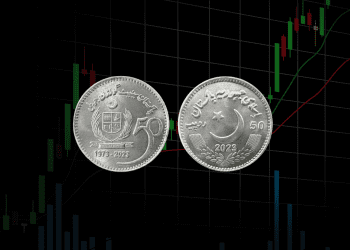Oil prices surged by more than 2% on Wednesday as heightened tensions in the Middle East sparked concerns about potential disruptions to crude output from the region, following Iran’s significant military strike against Israel.
Brent crude futures jumped $1.63, or 2.2%, to reach $75.19 per barrel, while US West Texas Intermediate (WTI) crude rose by $1.70, or 2.4%, to $71.53 at 0755 GMT. Earlier in the session, WTI had surged by more than $2.
Both crude benchmarks had gained over 5% on Tuesday before closing the day approximately 2.5% higher. The increase in prices comes after Iran launched a missile attack on Israel, with Tehran stating that it would halt further strikes unless provoked. In response, Israel and the US vowed to retaliate, raising fears of an escalating conflict that could impact oil facilities.
Tamas Varga of oil broker PVM warned that the conflict could lead to severe consequences, including damage to Iran’s oil infrastructure or retaliation targeting Saudi oil facilities, reminiscent of the 2019 strikes. A potential closure of the Strait of Hormuz, a critical chokepoint for global oil shipments, was also highlighted as a scenario that could send prices soaring.
Amid rising tensions, the Israeli military intensified its operations by deploying infantry and armored units to southern Lebanon, where they are engaged in conflict with the Iran-backed Hezbollah. The United Nations Security Council scheduled a meeting on Wednesday to address the Middle East crisis, while the European Union called for an immediate ceasefire.
Iran’s oil production hit a six-year high of 3.7 million barrels per day (bpd) in August, according to ANZ analysts. However, any further escalation involving Iran could draw the US into the conflict, posing a significant threat to global oil supply. Iran currently contributes around 4% of global oil production, and the potential for Saudi Arabia to increase output in the event of disrupted Iranian supplies remains a key consideration.
A ministerial panel from OPEC+, which includes Russia, is scheduled to meet later on Wednesday to review the market. While no policy changes are expected, the group is set to increase production by 180,000 bpd per month starting in December. However, reports from the Wall Street Journal, citing OPEC+ delegates, indicate that Saudi Arabia’s oil minister has warned prices could fall to $50 per barrel if the group’s members fail to adhere to production limits.
A DAY EARLIER
Oil prices surged approximately 4% on Tuesday amid escalating tensions in the Middle East, particularly concerning Iran’s potential missile attack on Israel. Brent crude futures increased by $2.50 (3.5%) to $74.20 a barrel, while U.S. West Texas Intermediate (WTI) crude rose $2.54 (3.7%) to $70.71.
The escalation comes as Israeli forces conducted limited ground raids in Lebanon, with Hezbollah firing missiles at Tel Aviv. The U.S. warned that Iran might be preparing to enter the conflict with a ballistic missile strike on Israel. Experts suggest that an Iranian attack could provoke a significant Israeli military response targeting Iran’s oil infrastructure, which could disrupt over a million barrels per day.
Prior to these developments, oil prices were trading near a two-week low due to an outlook of increased supplies and weak global demand. OPEC+ is scheduled to review the market, with no policy changes anticipated. Starting in December, OPEC+ plans to increase production by 180,000 barrels per day each month.
Additionally, news of a potential recovery in Libyan oil output weighed on prices, as Libya’s parliament agreed to appoint a new central bank governor, which may resolve a crisis affecting oil production. In 2023, Iran produced about 4.0 million barrels per day, while Libya’s output was around 1.3 million barrels per day.
Analysts noted mixed signals in the market, with UBS’s Giovanni Staunovo highlighting that the resumption of Libyan output could exert downward pressure on prices, while Chinese stimulus measures, U.S. oil demand growth, and slowing crude supply growth could support them.
In the U.S., analysts expect a withdrawal of about 2.1 million barrels from oil storage, marking the third consecutive withdrawal. This contrasts with the same week last year, which saw a withdrawal of 2.2 million barrels, and an average increase of 0.4 million barrels over the past five years.
















